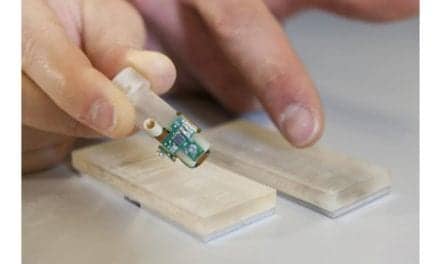Among people who develop adult-acquired flatfoot deformity (AAFD), younger patients usually receive reconstructions, while older patients undergo fusions, even though it can limit mobility.
Researchers from Hospital from Special Surgery note, however, that flatfoot reconstruction procedures can be effective in older patients as well.
“Overall, flatfoot reconstruction provides better long-term outcomes and mobility of the foot when compared to foot fusions,” says Scott J. Ellis, MD, foot and ankle surgeon at HSS and senior study author. “However, there is a chance that reconstruction could fail, and to avoid a long, arduous recovery with multiple surgeries, patients older than 65 commonly skip reconstruction and opt for a fusion.”
In their study, the researchers evaluated patients over 65 with stage II AAFD to see if there are worse clinical outcomes or an increased number of subsequent surgical procedures following flatfoot reconstruction when compared to younger patients.
“My colleagues and I wanted to investigate if this was still a viable option for elderly patients in the hopes of maintaining flexibility in their foot,” Ellis adds, in a media release from Hospital for Special Surgery.
Over 130 HSS patients were assessed in three groups based on their age: less than 45 years old (young); 45 to 65 years old (middle-aged); and 65 years and older (oldest).
This study measured clinical outcomes using the Foot and Ankle Outcome Score (FAOS) and compared preoperative and postoperative scores at a minimum of 2 years. Findings indicated that patients in the older group did not demonstrate any differences in their outcomes compared with patients in the young and middle-aged groups.
Additionally, older patients were not more likely to undergo a subsequent removal of hardware or revision procedures than patients in the younger cohorts, the release continues.
“Our initial hypothesis was that there would be increased complications for patients in the older group. However, we saw positive, consistent surgical outcomes across all age groups,” Ellis adds. “Depending on the severity of the condition, we believe a flatfoot reconstruction is a great option for patients regardless of their age. For the right patient, it can be the last surgery that they need.”
Ellis believes that older patients have not often been offered a flatfoot reconstruction by their surgeons since there has not been enough research to critically review surgical outcomes. The loss of mobility with a fusion is something patients need to consider and discuss with their surgeon along with their expectations.
“This is strong evidence to support that flatfoot reconstruction can be an option for everyone, but we need to continue to follow patient clinical outcomes over an extended period of time to provide more data for this sparsely investigated topic,” Ellis concludes.
The study was presented recently during the American Academy of Orthopaedic Surgeons annual meeting.
[Source(s): Hospital for Special Surgery, Science Daily]




